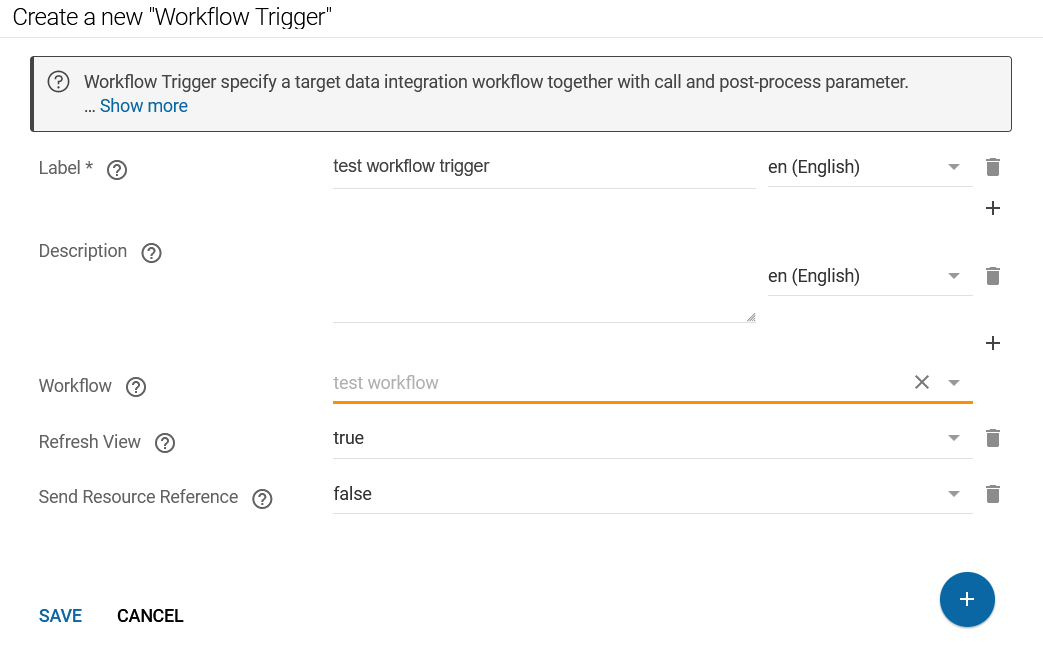Workflow Trigger¤
Introduction¤
Workflow Trigger allow for manual execution of data integration workflows inside of the exploration interface.
Optionally, a reference to the resource in view on workflow execution can be sent, allowing an executed workflow to act specifically on this resource (or a specific portion of the Knowledge Graph related to it). Workflow trigger are associated to Node Shapes by defining special-purpose non-validating Property Shape resources.
Setup¤
Workflow Trigger can be defined and used in any active Shape Catalog (active means, it is imported from the main Shape Catalog). A workflow trigger resource references a data integration workflow by URI.
To define a workflow trigger the following information is needed:
- Label: The trigger resource needs a label (can be given in different languages), which is used for the button presentation.
- Description: The trigger resource needs a description, which is used as text that is sitting left of the button for further documentation of the activity to the user.
- Workflow: the workflow parameter defines the workflow that shall be executed upon clicking the button. The workflow can be selected from a dropdown list.
- Refresh View: can be either
trueorfalse. If this value is set totrue, the view that contains the workflow trigger will be reloaded upon workflow completion - Send Resource Reference: can be either
trueorfalse. If this value is set totrue, a payload that consists of the resource IRI that is represented in the view as well as the graph IRI of the graph that is currently selected.
Integration¤
Once a trigger resources is defined, it can be attached to a Node Shape by using a special-purpose non-validating Property Shape resources.
Such property shapes use a shui:provideWorkflowTrigger statement to define, which workflow trigger are to be represented.
SHACL path statements on such Property Shape resources are meaningless and ignored, but may be provided.
Payload Structure¤
When Send Resource Reference is set to true, a payload is added to the call of the workflow. The payload consists of a JSON document with two attributes:
Workflow Payload
{
"graphIRI": "http://example.org/example-graph",
"resourceIRI": "http://example.org/example-graph/examle-resource"
}
graphIRIis the IRI of the graph that is currently viewed, andresourceIRIis the IRI of the resource that is viewed.
